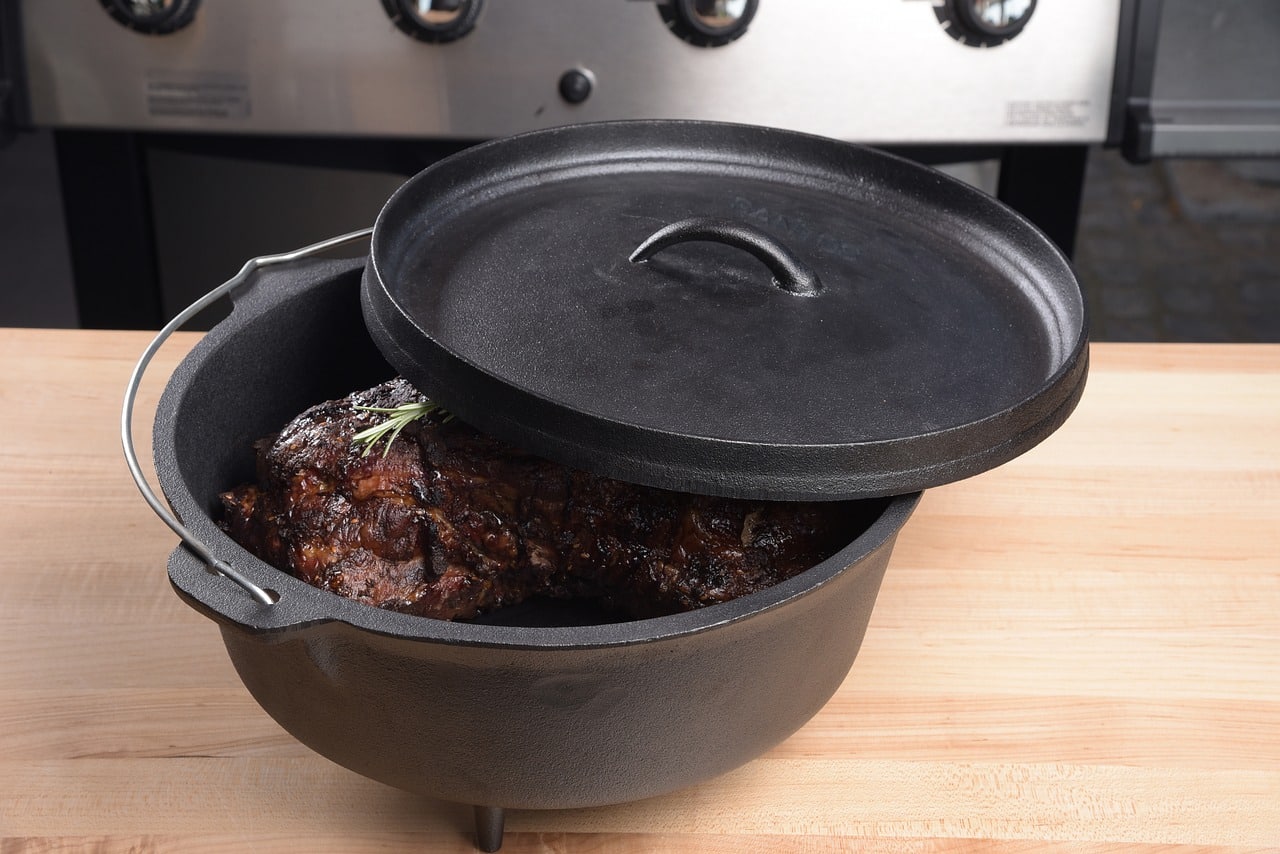From the rustic charm of a country kitchen to the high heat of a bustling restaurant, cast iron cookware has proven itself to be a versatile and reliable tool in the culinary world. Its durability and heat retention make it an optimal choice for any cooking style, from frying to baking. However, to truly unlock the potential of this time-tested metal, you need to understand the best techniques to use and how to care for it properly.
The Basics of Cooking with Cast Iron
The first step towards culinary mastery is understanding your tools. Cast iron skillets are unique in their properties, and learning how to utilize their strengths will elevate your cooking to new heights.
A voir aussi : The best homemade burger: tips and tricks
One of the main benefits of a cast iron skillet is its heat retention. Cast iron pans take a bit longer to heat up than their stainless steel or non-stick counterparts, but once they reach the desired temperature, they maintain it much more consistently. This makes them perfect for searing meats, sautéing vegetables, or even baking cornbread in the oven.
Remember that the handle of a cast iron skillet gets just as hot as the cooking surface. Always use proper protection when handling your skillet, especially when transferring it to and from the oven.
A voir aussi : Korean bbq at home: grilling like a pro
Seasoning Your Cast Iron Pan
Seasoning is the process of building up a layer of oil on your skillet’s surface, which then polymerizes with heat to form a non-stick coating. This coating not only makes cooking easier but also protects the surface of your skillet from rusting.
To season your skillet, you will need to apply a thin layer of oil to its surface and then bake it in the oven at a high temperature. After the oil has baked onto the surface, let the skillet cool in the oven before removing it.
Remember to season your skillet regularly to maintain its non-stick surface. Each time you cook with your skillet, the heat will help to reinforce this protective layer.
Cooking Techniques for Cast Iron Skillets
Now that you understand the basics of your cast iron skillet and have a well-seasoned pan, it’s time to start cooking. There are a multitude of techniques that you can use, and we’ll be covering some of the best ones.
Dry heat cooking methods like sautéing, roasting, and searing are where cast iron truly shines. The consistent temperature and heat retention make them ideal for achieving a perfect brown crust on your steak or a deliciously caramelized onion.
You can also use your cast iron skillet for baking in the oven. From hearty frittatas to sweet apple pies, the heat retention of cast iron will help your baked goods cook evenly and thoroughly.
Caring for Your Cast Iron Cookware
Proper care and maintenance are crucial to keep your cast iron cookware performing its best. Cleaning your skillet properly after each use will prolong its life and maintain its non-stick surface.
To clean your skillet, remove any leftover food and rinse it under hot water. Avoid using soap, as this can strip away the pan’s seasoning. If there are stubborn bits of food stuck to the pan, a simple paste of coarse salt and water will act like a gentle abrasive. Rinely, dry the skillet thoroughly to prevent rusting.
After each cleaning, it’s good to apply a thin layer of oil to the skillet’s surface to keep it well-seasoned and protected.
Why Cast Iron Cookware is a Good Investment
The last point to consider in our ultimate guide to cooking with cast iron is why it’s worth investing in this type of cookware.
Cast iron pans are incredibly durable. They can withstand high temperatures, making them suitable for a variety of cooking techniques. They can go from the stovetop to the oven without any problem, and their robust construction means they can last for generations if cared for properly.
Their aforementioned heat-retention capabilities make for efficient and even cooking. This can lead to better-tasting food and can even help save on energy costs.
Finally, a well-seasoned cast iron pan is virtually non-stick, reducing the need for excess cooking fats. This makes it a healthier option for cooking.
Cooking with cast iron may require a little more care and effort, but the results are well worth it. Not only will you be able to create delicious meals, but you’ll also have a piece of cookware that, with proper care, can last you a lifetime.
The Versatility of Cast Iron in Different Cooking Styles
Beyond the simplicity of searing and sautéing, cast iron cookware offers a wide range of flexibility in various cooking styles. It handles the transition from stove to oven seamlessly, which is ideal for recipes that require both methods. A cast iron Dutch oven, for instance, is perfect for slow-cooking stews and braises.
Another great use for your cast iron is deep frying. Cast iron’s excellent heat retention ensures a steady temperature, reducing the chance of your food burning. Additionally, the high sides of an iron skillet or Dutch oven can help prevent oil splatter, keeping your kitchen clean.
Cast iron pans are also suitable for cooking acidic foods such as tomato sauce, contrary to popular belief. However, do so only in well-seasoned cast iron or enameled cast iron to prevent any metallic flavor absorption.
Grilling is another area where cast iron excels. Cast iron grill pans offer similar heat retention to a regular skillet and will give your meat beautiful grill marks while sealing in the juices.
Lastly, in explaining the versatility of using cast iron, it is essential to touch on its smoke point. Cast iron can withstand high temperatures without releasing toxic fumes, unlike non-stick pans, making it a safer option. The higher smoke point is particularly beneficial when you need to sear meats or roast vegetables at high temperatures.
Experimenting with Different Oils
To season cast iron, it’s best to use an oil with a high smoke point. Flaxseed oil is often recommended due to its high smoke point and ability to polymerize into a hard, non-stick coating. However, vegetable oil, canola oil, and shortening are also commonly used.
It’s important to note that olive oil, while it can be used, has a lower smoke point. This means it may smoke or burn more readily at high temperatures, which could affect the flavor of your food. However, extra virgin olive oil can be used for low or medium-heat cooking.
While experimenting with different oils for seasoning cast iron, remember to apply only a thin layer. Excess oil can become sticky and does not contribute to a better seasoning. Instead, it can create an uneven surface on your pan.
Conclusion: Mastering Cast Iron Cooking
Using and maintaining cast iron cookware may require a bit more attention and care compared to other materials such as stainless steel. However, the advantages definitely outweigh the extra effort. With its unmatched heat retention and versatility across various cooking styles, cast iron is undeniably a worthy addition to your kitchen.
Once you master the art of cast iron cooking, you’ll find that it not only improves your culinary skills but also enhances the flavor of your meals. It’s a lifelong investment that can be passed down generations, making it not just a tool, but a legacy in your kitchen.
From the proper seasoning with flaxseed oil or olive oil to understanding the high heat tolerance and the significance of the smoke point, this guide should help you cook with cast iron like a pro. The journey to mastering cooking with cast iron may be a learning curve, but it surely is a rewarding one. So go forth, season your skillet, and let the aroma of delicious food cooked in your cast iron fill your home.











